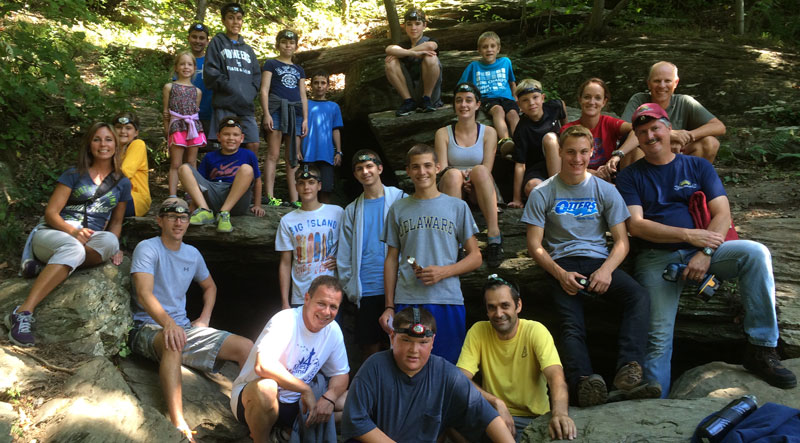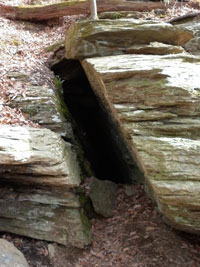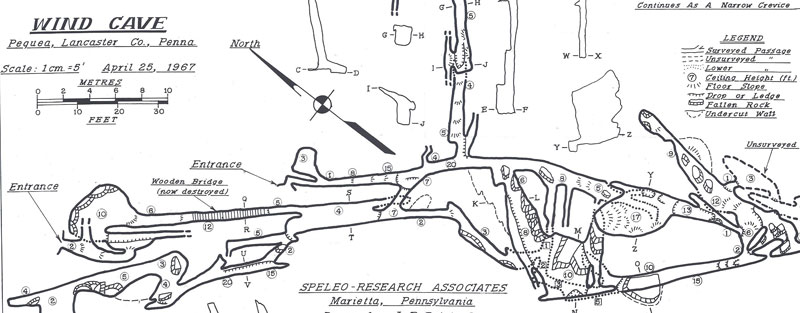buy antibiotic online
buy amoxicillin uk click amoxicillin 500 mg capsulessertraline visa
antidepressant online deliverybuy prednisolone 25mg tablets
buy prednisolone eye drops over the counter link prednisolone side effectsWARNING
Please note that the owner of the Wind Caves property encourages only those with proper experience and/or applicable guides to enter the caves. They also want to ensure that those who are going to utilize it come prepared with appropriate clothing and safety gear. It is also advisable to notify first responders prior to entering the caves that you are doing so in the event that there is an incident.
Wind Cave aka Cold Cave
This cave also is called 'Cold Cave' because it's nearly freezing all year

amoxicillin 875
amoxicillin side effect blog.schauweb.dk amoxil dosageWind / Cold Cave
Wind Cave is called Cold Cave because it's nearly freezing in there at all seasons.
It is one of the largest tectonic (created by moving rocks fracturing, not erosion) caves in the eastern United States. It is found in Pequea, Pennsylvania, about a 30 minute drive from Lancaster, in the Susquehanna valley.
To get there, follow 324 South from Lancaster. You will run into a T where the road ends when it hits the river. Take a left, onto Ridge Drive, before long on your right there will be a gated-off road entrance and several gravel parking spaces between the road and a guard-rail. Park here and follow the gated road about a hundred yards until you see a small path leading off to the left. Take this path, and keep going. It seems to wind on endlessly, but just keep going. You will come to a piling of rocks, and in this piling is a large entrance, with a sign posted by the York Grotto about taking care of the cave.
Related Articles
naltrexon
naltrexon teampaula.azurewebsites.net naltrexonThe Pennsylvania Cave Conservancyalcoholism treatment uk
order naltrexone pills- Cave in Pennsylvania
- The Underground of the Conestoga Trail
prednisolone cost
buy prednisoloneabortion philippines
abortion pill philippines Download The Topographic and Geologic Survey198.83 K | 10/27/2014
Download The Topographic and Geologic Survey198.83 K | 10/27/2014
"Some parts are tight and you absolutely need a bright light for every person in your group. Climbing, squeezing, and forgetting which way you came will all be involved."
The Temperature:
accessible portions of the cave at 30 degrees F
Wind Cave, high on the eastern bank of the Susquehanna River in Lancaster County, Pa., is not a spectacular cave but is of interest because of its formation. It was not formed by solution but is one of the largest tectonic, or fault, caves in the eastern United States, perhaps in the country.
A summer visit to the cave easily explains both the name “Wind” and the local appellation of “Cold.” Throughout the main passageways a strong entrance-blowing air current is apparent and the temperature is decidedly cooler than that of other Pennsylvania caves (The mean temperatures for Pennsylvania caves range from 50 degrees to 57 degrees F.). In May, 1962 a careful check determined that the temperature in all accessible portions of the cave was 30 degrees F. At no time were we able to reach any room or passageway where there was any discernible variation in the temperature and very little in air currents. This is partially explained by the fact that most of the passages do not end in the usual sense but narrow to untraversable crevices-sometimes quite high-that continue for unknown distances.
In addition to the unusual temperature, another warm weather condition was encountered. All rooms and passageways entered had considerable condensation and thousands of drops of water hung from the room and every protruding rock. The fact that they sparkled like proverbial “jewels” in our lights did nothing to dispel their cold wetness when they fell unexpectedly down one’s neck or splashed unconcernedly on the camera lens just as a picture was being taken.
During the colder months the cave is quite dry, evidence of water-undoubtedly surface water- being found at only two widely separated points. The winter temperature may also be cooler than that of the normal Pennsylvania cave. Although no accurate winter readings have been taken by the author, thick sheets of ice are often found on the northeast wall at the inner end of the now-destroyed wooden bridge.

Two Entrances
The two entrances to the cave are about 75 feet apart (Figure 35). The one used most is an almost vertical crack in the rock, 8 feet high and 2 to 3 feet wide. The floor gradually descends until the flat ceiling is 15 feet to 25 feet high as the passageway goes straight under the hill for at least 150 feet. The fractured rock faces that are usually characteristic of a fault are much in evidence along this passage. There is a little breakdown and the only fill is debris carried in by the wind and casual spelunkers.
Large fallen blocks dot the passageway here and there and some climbing is required but at 175 to 200 feet= depending on one’s girth-it becomes too nary for further progress. Despite a ceiling height of 20 feet, this is the extent of exploration in this section.
Seventy-five feet from the entrance and near a small open to the surface, 28 feet above, a cross joint makes an abrupt right angle passageway to the south and drops down to a lower level, and the longest part of the cave, consisting of two or more passageways that parallel the first one. One of these passages connects to the second entrance, and at one spot was once floored by a crude wooden bridge, which spanned a 6 to 8 foot deep chasm, but time and the passage of local explorers have just about ended its usefulness. Near this area a side passageway was blasted open by B. Hivner in 1956 and about 100 more feet of cave was found. It consists of a high and narrow canyon-like passageway-good for chimney practicing-and lower stoop ways similar to other parts of the cave. Because it is a trifle more difficult to enter this section it is seldom visited by the many local spelunkers and, indeed, most do not seem to be aware of its existence. In August 1962, another room was discovered in the south portion of the cave. It is entered from the north through breakdown, and from the south through a tight crawlway. The room consists of a change 12 feet wide, 20 feet long and up to 17 feet high. A canyon-like passage on the south side connects to the previously mentioned crawlway.
In other parts of the cave, dropped blocks sometimes make a short crawl necessary but progress is easy as compared with most “wild” caves. At one stop at 10 foot drop to a lower level is easily negotiated. It leads to another cross joint varying from 10 to 15 feet in height with numerous offsets and large breakdown. Most of the leads end in choked tunnels or at those frustrating high and very narrow crevices that are too small even for the Thin Man to enter. Here and there on the floor are large blocks of what seem to be quartz.
The cave is easy to enter, reasonably safe and, except for short drops here and there, easily climbed by the inexperienced. Some potentially dangerous breakdown is found in passageways off the lower level but this is a threat only to those unfamiliar with good caving technique. The possibilities for finding more cave are good if one wants to invest the time necessary to enlarge the narrow crevices.

Wind Cave is the Largest Tectonic cave in PA
Although there seems to be some differences among authorities as to the correct designation for Wind Cave, William B. White in the 1959 Speleo Digest, p. 2-2 suggest that “Tectonic” is correct and quotes deBellard as follows: “Tectonic caves formed by actual movement of masses of bedrock. Thus they can occur in any type of rock, but are usually associated with hard, insoluble rocks, because they are easily distinguished from cave of other origin.” The type of tectonic activity is not specified. It might be slippage along bedding planes, parting because of intense folding, or a sudden splitting due to faulting.
Tectonic caves are usually small. Other Pennsylvania examples are Dravosburg Cave, Blessing Mountain Wells, and Panther Cave. With more than a thousand feet of passageways, Wind Cave is by far the largest known in the state. Some so-called tectonic “caves” are not actually caves in the usual sense butare simply deep rifts and chasms which are open at the top and which may or may not have small portions completely roofed. All of Wind Cave is entirely underground. The walls of the Susquehanna gorge at Wind Cave are formed in preCambrian(?) Wissahickon muscovite, chlorite, quartz schist, an insoluble rock composed largely of mica flakes. When these walls settled and split may thousands of years ago, 3 or more systems of nearly vertical joints opened, forming an extensive system of passageways.
“Two or more of the main joints have a N50°W course, another is at a right angle to these and a third set of joints is nearly north-south” (Stone, 1953). There are no speleothems in Wind Cave. The walls and ceilings are rough throughout and there is no evidence of solution. The rock seems to be the same type throughout. There is no fill as commonly associated with solution caves. Apparently almost all of the relatively small amount of breakdown occurred during the formation of the cave when the walls were split apart. Mica flakes are prominent throughout and, during the summer months when condensation causes water drops which “wash” the flakes here and there, they are more plainly seen.
Cave Fauna
Our old friend the Allegheny cave rat, Neotoma magister, is still nesting in certain areas as he has done by many years. Commenting on the inquisitiveness of the rodent, Charles Mohr one wrote: “In Wind Cave I have watched 40 persons file by a ledge where a cave rat sat, seemingly fascinated by the unprecedented parade.” The rats are still there and are as inquisitive as ever but by now seem to be much less fascinated by spelunkers.
As far as the author knows, no other cave fauna-including bats-have ever been reported from Wind Cave. Is this absence of life due to the formation of the cave or to its temperature? If either is the case this would be worth a careful study on the part of some enterprising speleologist. There are no speleothems in Wind Cave. The walls and ceilings are rough throughout and there is no evidence of solution. The rock seems to be the same type throughout. There is no fill as commonly associated with solution caves. Apparently almost all of the relatively small amount of breakdown occurred during the formation of the cave when the walls were split apart. Mica flakes are prominent throughout and, during the summer months when condensation causes water drops which “wash” the flakes here and there, they are more plainly seen.
Our old friend the Allegheny cave rat, Neotoma magister, is still nesting in certain areas as he has done by many years. Commenting on the inquisitiveness of the rodent, Charles Mohr one wrote: “In Wind Cave I have watched 40 persons file by a ledge where a cave rat sat, seemingly fascinated by the unprecedented parade.” The rats are still there and are as inquisitive as ever but by now seem to be much less fascinated by spelunkers.
As far as the author knows, no other cave fauna-including bats-have ever been reported from Wind Cave. Is this absence of life due to the formation of the cave or to its temperature? If either is the case this would be worth a careful study on the part of some enterprising speleologist.
Content on this page from:
Caves of southeastern Pennsylvania
abortion pill over the counter
order abortion pill onlinePublisher: Harrisburg, Pa. : Pennsylvania, Bureau of Topographic and Geological Survey, 1974.
amitriptyline online
buy antidepressant website buy amitriptyline ukJ. R. Reich, Jr. 1974. 120 p., 17 pls.
551.447.C3150
A Random Sample of Lancaster Instagram Photographers
Please Like Us On Facebook
clomid london
clomid uk success rates thiscodebytes.com clomid online reviewsShare This Page
naltrexone buy uk
buy naltrexone online usa tonydyson.co.uk where to buy low dose naltrexonePage Sponsored By:
Lee Landis from Flagstream provided the content for this page.

If you have a business computer network and you need technical assistance, Flagstream is the only place you need to look. We offer a total solution for your computer and network needs that is cost effective.

Cave Photography: Getting Good pictures in Nature’s Darkroom
by Dave Bunnell
"The fundamental key to good photography in caves is simple: move the flash away from the camera. Cave photos shot with only a built-in flash, or an external one connected directly to the camera, tend to look somewhat flat and uninteresting, and often hazy."









